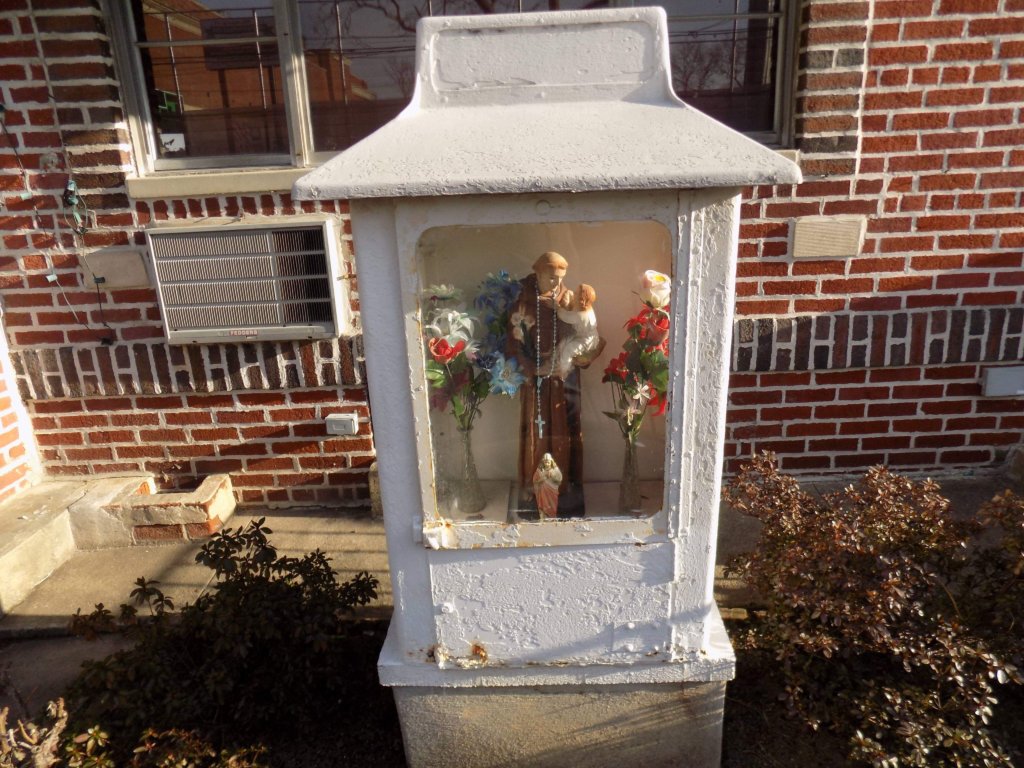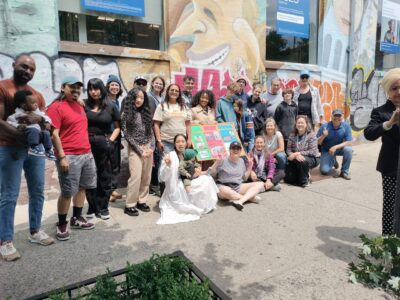When Raymond Guarini was growing up in Bay Ridge, one his favorite places to eat was Cono’s, an Italian restaurant on Fifth Avenue. “My family used to eat there all the time. We had wonderful memories of great meals we had there. But it closed a long time ago,” he said.
As his favorite restaurants and shops started to close, Guarini, a 38-year-old brokerage firm managing director, started thinking about ways to document the past and boost Italian-American pride. “I realized that my kids would never know the beautiful neighborhood we grew up in,” he said.
So he started taking pictures of Brooklyn neighborhoods and talking to people about their memories of their favorite spots.
And so Italian Enclaves, a website for history buffs whose interests are rooted in the Mediterranean, was born.
Guarini has also taken it upon himself to study Italian-American communities across the U.S., how they formed, what life was like there and how they started to disappear.
Italian Enclaves has a Facebook page and an Instagram that has been known to break news. The group’s Facebook page was the first to report the news that Our Lady of Guadalupe Catholic Academy in Bensonhurst would close. The school, which educated generations of children for 90 years, is slated to close in June.
Over the past six years, Guarini has visited approximately 75 Italian neighborhoods in big cities and small towns in the U.S.
Guarini, who is a member of the National Italian-American Foundation, is also trying to build a network of like-minded people interested in the Italian-American experience in America.
There are hundreds of Italian-American communities in the U.S., largely stemming from an Italian migration to America that took place in the late 19th century.
In his research, Guarini found that the biggest common denominator he found in all of the Italian American communities is the Catholic Church. “A lot of these neighborhoods built up around the local church,” he said.
Another common denominator is the annual feast honoring a patron saint. Streets would be closed to traffic, parishioners would march in processions and the aroma of Italian food would fill the air.
The feasts were important, according to Guarini, because they served as unifying events. “It would bring the entire community together,” he said.
Italian communities almost always had funeral homes, he said. “It makes sense. Funeral homes usually opened near churches. The churches had the funerals for their parishioners and the funeral homes handled the burial arrangements,” he said.
“The local bakery too, was a common denominator. It was used as a quid quo pro,” he said, explaining that immigrants would work in exchange for bread.
Little Italy is the most famous Italian neighborhood in America, but Guarini said East Harlem also had a large Italian population in the late 19th century.
Bensonhurst was perhaps the most well known Italian-American neighborhood in Brooklyn for many years.
Bensonhurst used to be a predominantly Jewish neighborhood. “The Italians started coming into Bensonhurst in the early 20th Century,” Guarini told this newspaper. A focal point was St. Rosalia Church, a small Catholic church at 14th Avenue and 63rd Street that was demolished a few years ago.
St. Athanasius Church on Bay Parkway and St. Finbar Church on Bay 20th St. were also power centers of Italian life in Bensonhurst and Bath Beach.
One reason Bensonhurst became an Italian-American enclave was the GI Bill, according to Guarini. “With the GI Bill, people were able to afford to buy homes,” he said. Italians flocked to the neighborhood in the years after World War II, he said.
From the 1950s to the 1970s, “There were big waves of immigration to Brooklyn,” he said. Many of the immigrants came from Bari, a port city on the Adriatic Sea, and from the Italian region of Calabria.
Another Italian-American enclave was Greenwich Village, specifically, the West Village. Community life centered around Our Lady of Pompeii Church.
According to the book “Bay Ridge Chronicles,” the 1950 U.S. Census showed that 50 percent of the population of Bay Ridge was Italian.
Other neighborhoods that welcomed Italians: Coney Island, where life centered on Our Lady of Solace Church, and Sunset Park, where the Italians gathered around St. Rocco’s Church on 20th Street between Fourth and Fifth avenues.
In recent years, Italian-Americans have moved out of Bensonhurst and Chinese immigrants have been moving in. That is a common occurrence. Many formerly Italian areas are now predominantly Asian, Guarini said. “The trend is for Asians to move next door to Italians. They’re great neighbors,” he said.
Guarini is the founder of the Italian Enclave Historical Society. He is proud of his Bay Ridge roots. “I’m a big fan of local culture,” he said.
He attended P.S. 102 and Poly Prep Country Day School and earned a Bachelor’s Degree in Business Management at St. Francis College.


 Sunset Park residents look to form new mural at 54th Street
Sunset Park residents look to form new mural at 54th Street  Man charged with attempted kidnapping after allegedly grabbing six-year-old in Coney Island
Man charged with attempted kidnapping after allegedly grabbing six-year-old in Coney Island